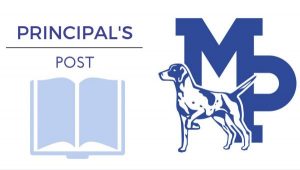 In June, the faculty examined the state social studies standards with the purpose of developing a written curriculum plan for this discipline. Last week, teachers focused on one strand of social studies (civics, economics, geography, history) and started to develop a narrative that would introduce students to the knowledge, skills, and dispositions of that area in an engaging way.
In June, the faculty examined the state social studies standards with the purpose of developing a written curriculum plan for this discipline. Last week, teachers focused on one strand of social studies (civics, economics, geography, history) and started to develop a narrative that would introduce students to the knowledge, skills, and dispositions of that area in an engaging way.
Why start with social studies? Beyond meeting the twin goals of the strategic plan (academic innovation and independence, community engagement), this discipline offers an opportunity “to help young people develop the ability to make informed and reasoned decisions for the public good as citizens of a culturally diverse, democratic society in an interdependent world,” according to the National Council for the Social Studies (NCSS).
This organization’s vision is “a world in which all students are educated and inspired for lifelong inquiry and informed civic action.” In other words, a worthy goal is for our students to be able to ask smart questions and become curious about the world, which should lead to taking active responsibility for our communities as well as themselves.
What does this look like in school? How might we simulate these types of experiences in the classroom? How do we determine whether students are successful as question askers and informed decision makers, all while meeting the demands of external accountability measures such as the state exam?
I don’t want to make this task too complex. Anxiety can lead to inaction. Maybe by looking back at and responding to the questions we have asked in the past, including the ones listed here, we can start to move toward developing an authentic, engaging, and challenging curriculum that stays with students beyond their school career. For more information about the benefits of a high-quality social studies curriculum, click here for a one-page infographic.
MATT RENWICK
PRINCIPAL, ELEMENTARY SCHOOL
This is Matt’s 20th year in public education. He started as a 5th and 6th grade teacher in a country school outside of Wisconsin Rapids, WI. After seven years of teaching, Matt served as an assistant principal, athletic director, and building principal all in Wisconsin Rapids. As an elementary principal with the Mineral Point Unified School District, he enjoys working with students, staff, and families in a collective pursuit of lifelong learning.

